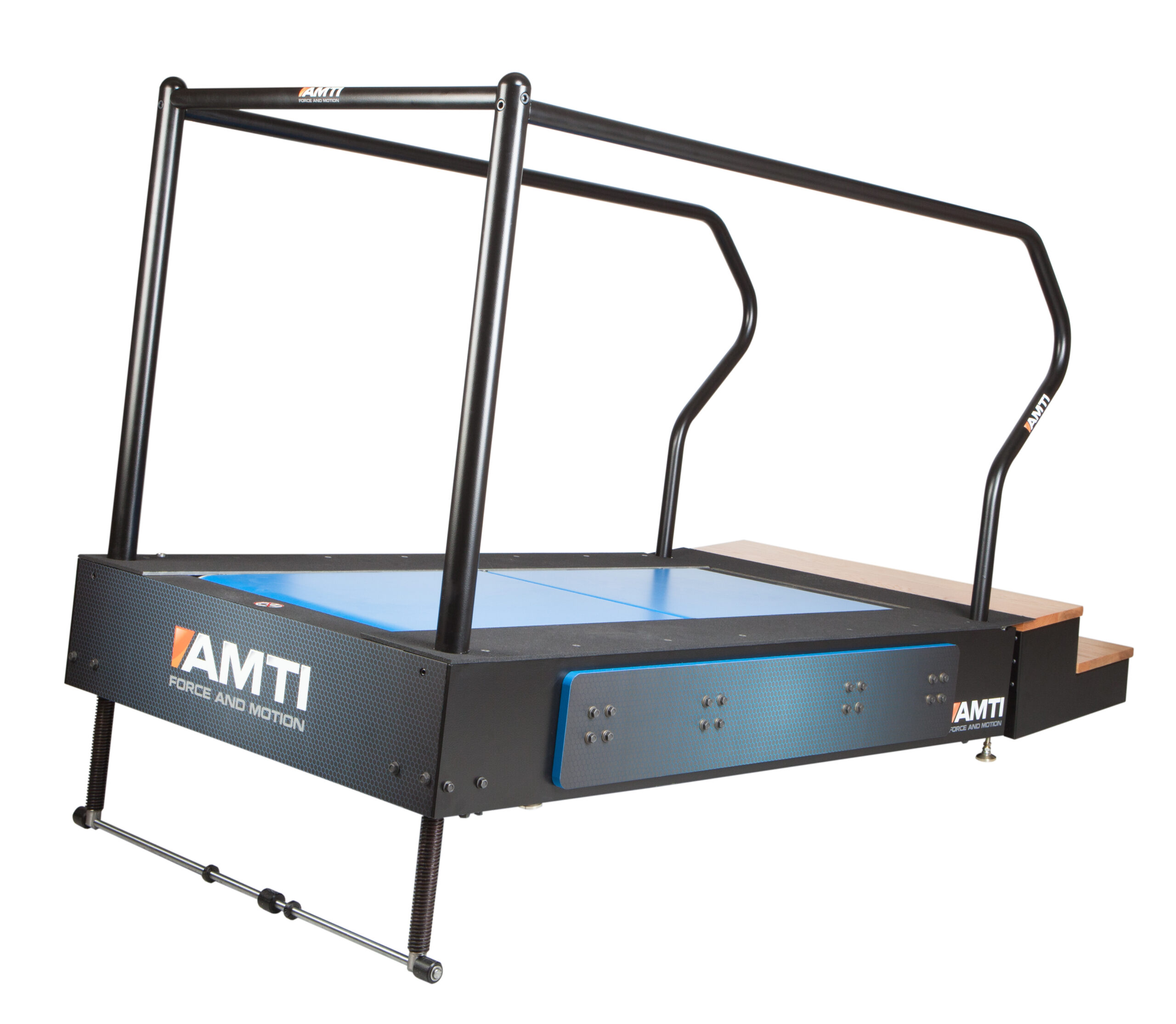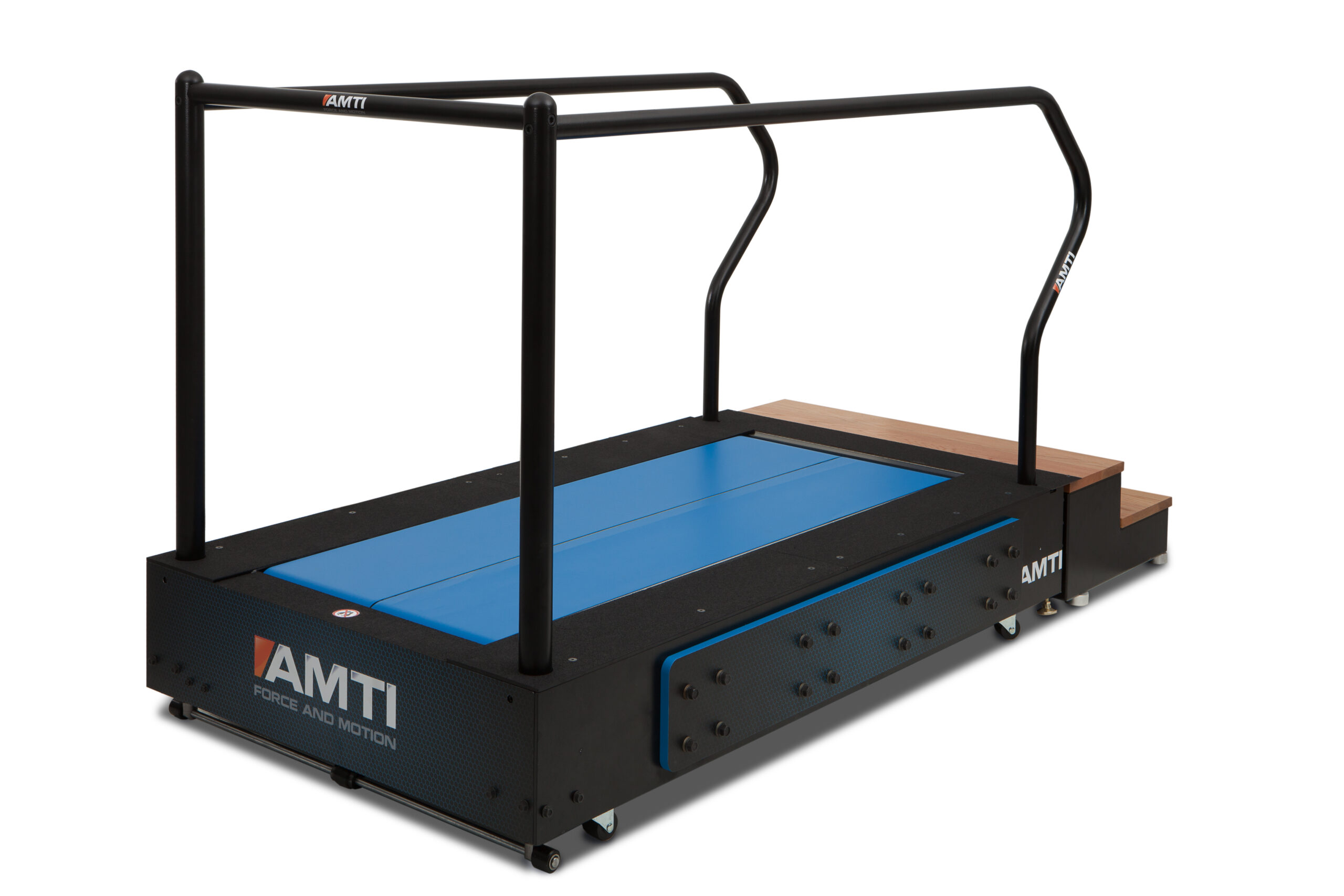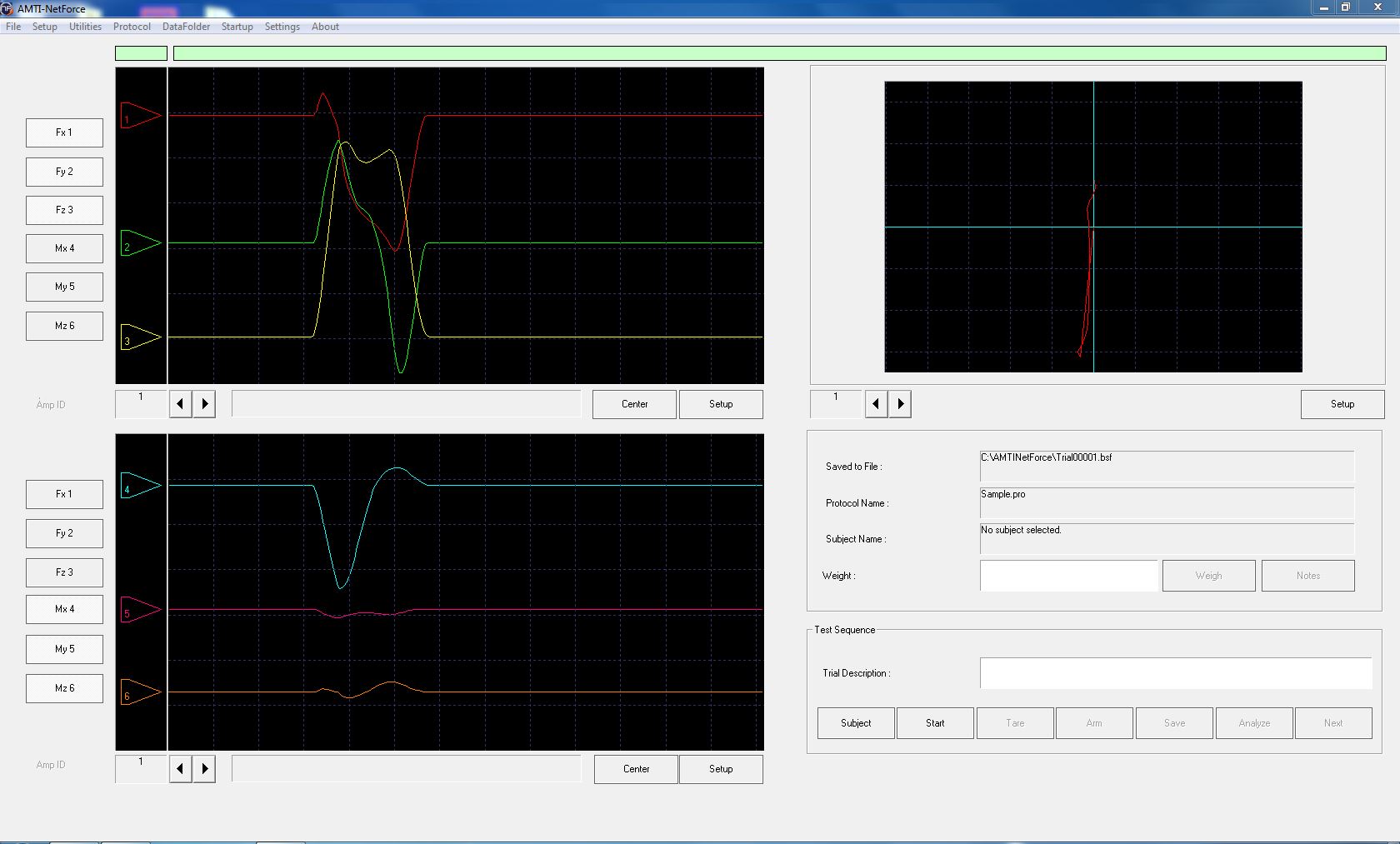There are three ground reaction force (GRF) instrumented treadmill designs on the market today. There is the single platform treadmill, which consists of a single treadmill belt with a single force platform imbedded in it. There is the side-by-side treadmill, which consists of two parallel treadmill belts, each with a force platform imbedded in it. Finally, there is the tandem treadmill (only offered by AMTI), which consists of two treadmill belts placed front-to-back, each with an embedded force platform. AMTI manufactures both side-by-side and tandem treadmills.
Single Belt Treadmills
A single platform treadmill has one instrumented force platform placed under a single belt. It is good for examining running, but not appropriate for studying walking gait. When running, only one foot is in contact with the ground at any given time. When walking, two feet are frequently in contact with the ground. This makes it impossible to differentiate the individual foot GRFs during walking using a single belt treadmill.

Side-by-Side Treadmills
AMTI’s Side-by-Side Treadmills mount two platforms, side-by-side, each with an independent belt and pulley embedded within a common framework. Advantage of this arrangement include the ability to alter the speeds of the left and right belts, or studying subjects who do short strides or shuffles where complete steps are not possible.
The drawback to this design is that the subject must walk straddling the gap between the two platforms, which is unnatural. In normal gait, overlap frequently occurs along the centerline between the left and right foot.

AMTI’s Tandem Treadmill
AMTI’s innovative Tandem Treadmill mounts two platforms end-to-end, each with its own independent belt and pulley. The end-to-end belt design allows subjects to maintain normal gait and eliminates many issues inherent to side-by-side, split-belt treadmills. With a tandem treadmill, subjects can walk naturally with no need to maintain their positions medial-laterally or straddle the belt split that runs down the center of the treadmill. Heel strike occurs on the front belt and the foot naturally translates to the rear belt for toe-off as the subject walks. With less than 2 mm clearance between the two belts, they function as one continuous belt while preventing the data problems that occur during the double support phase of walking.




